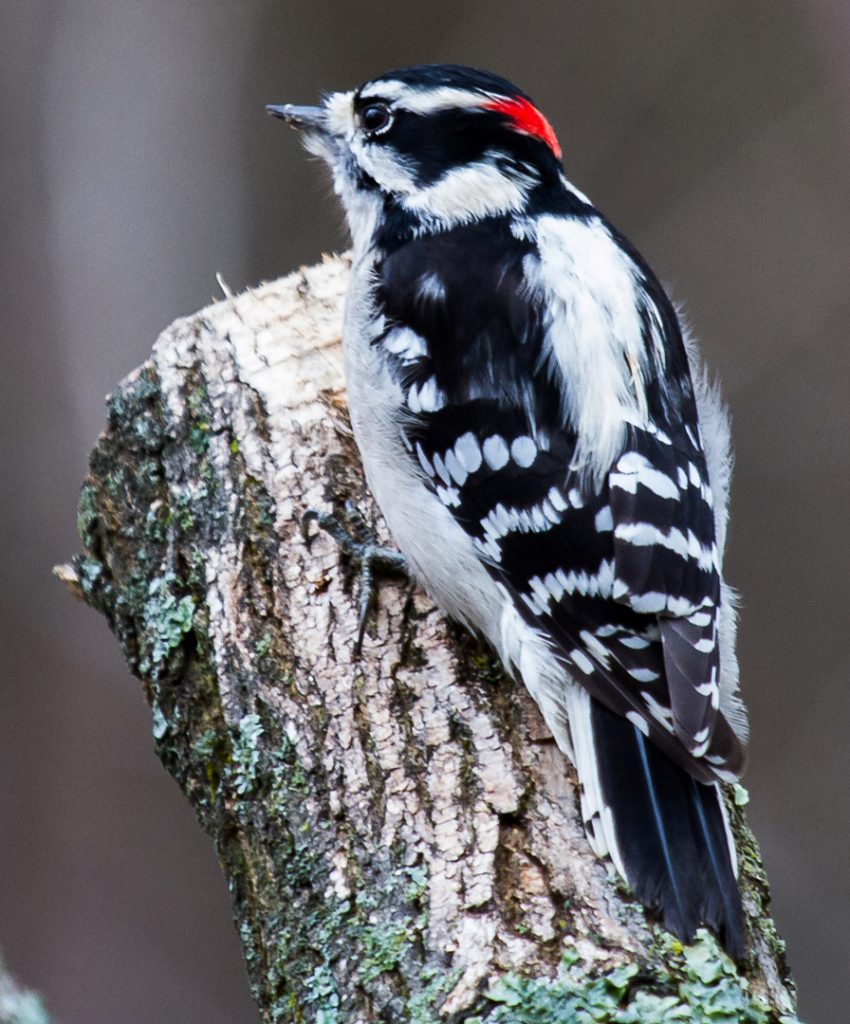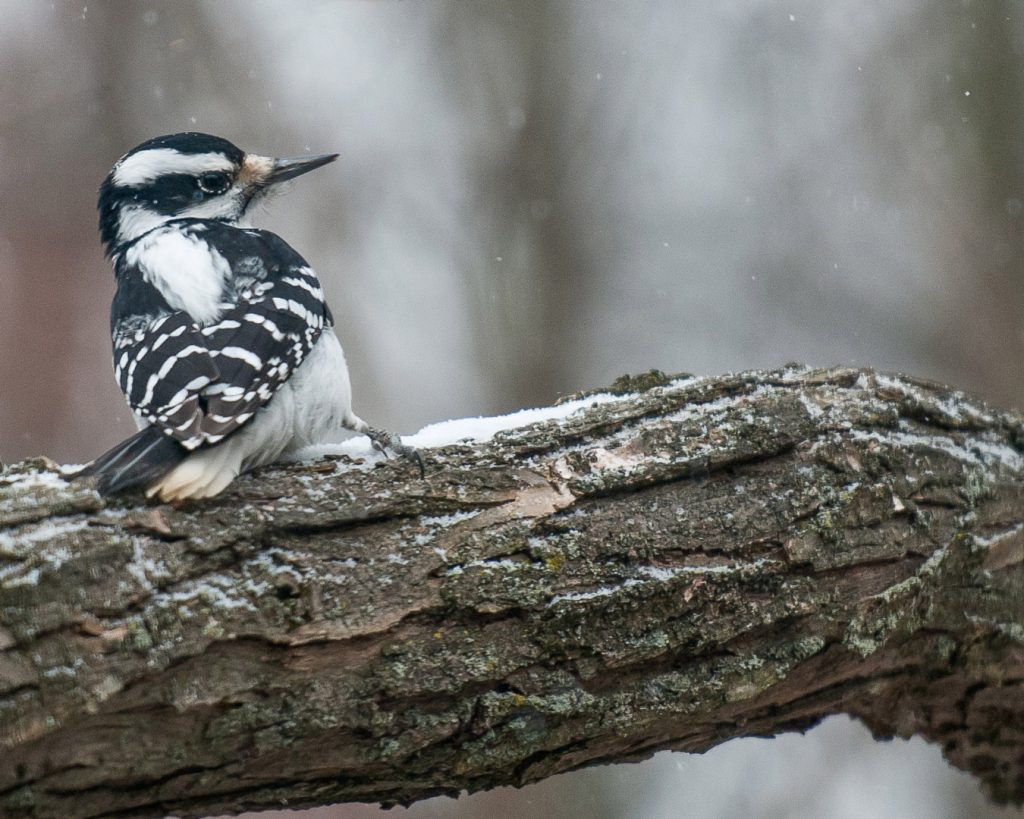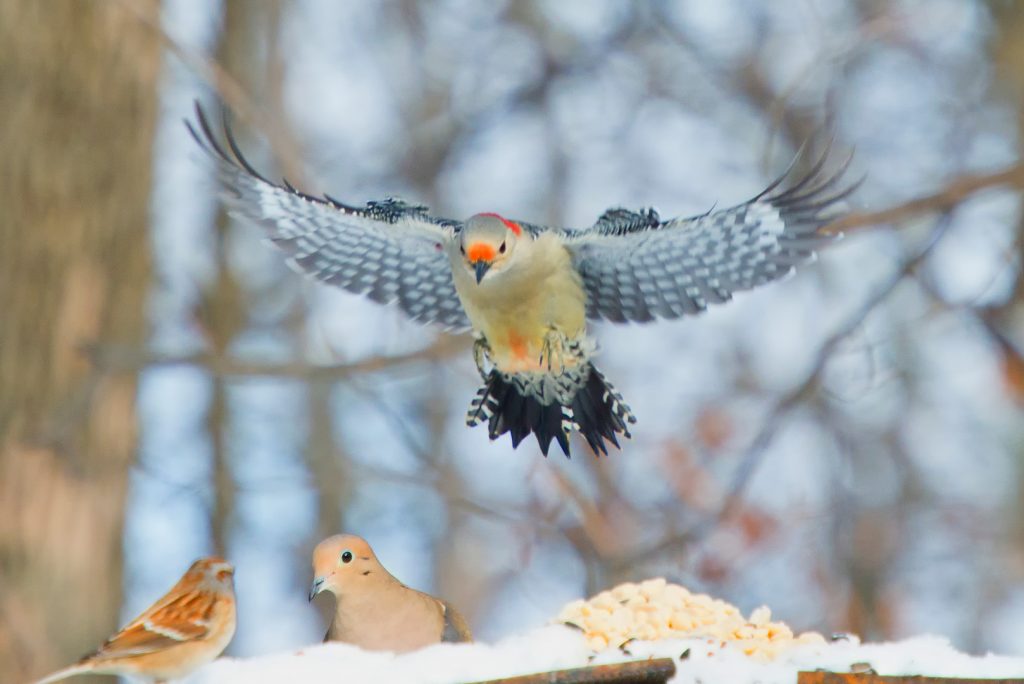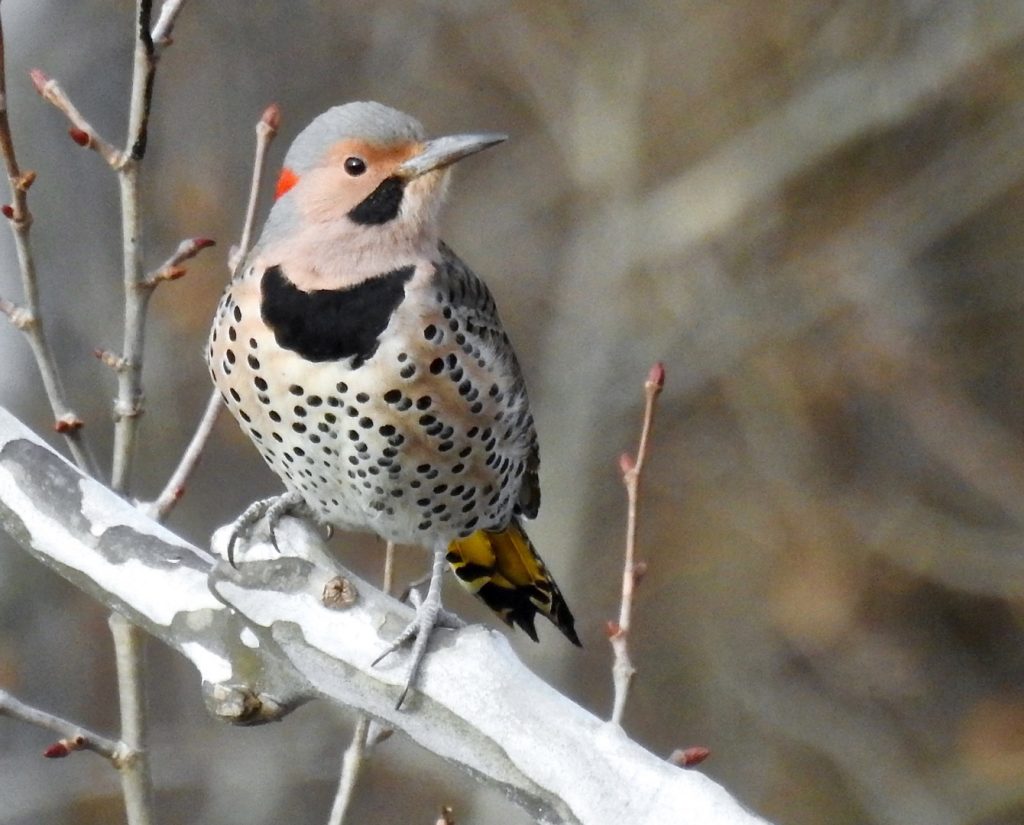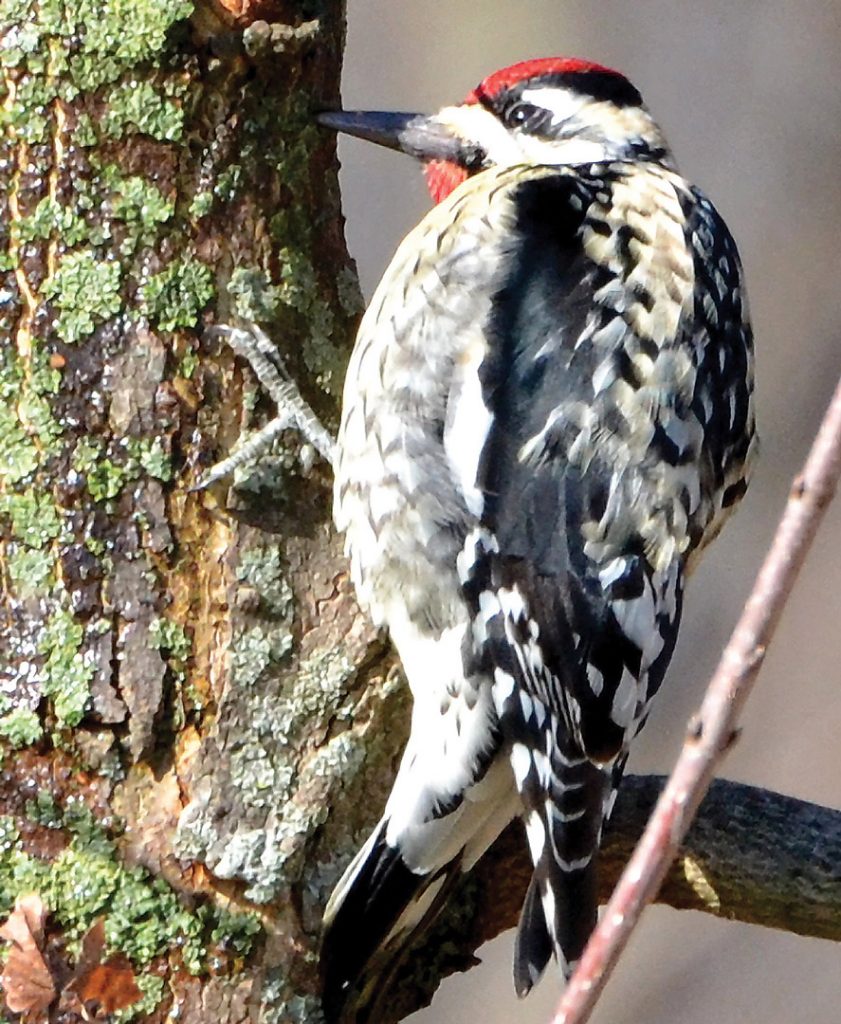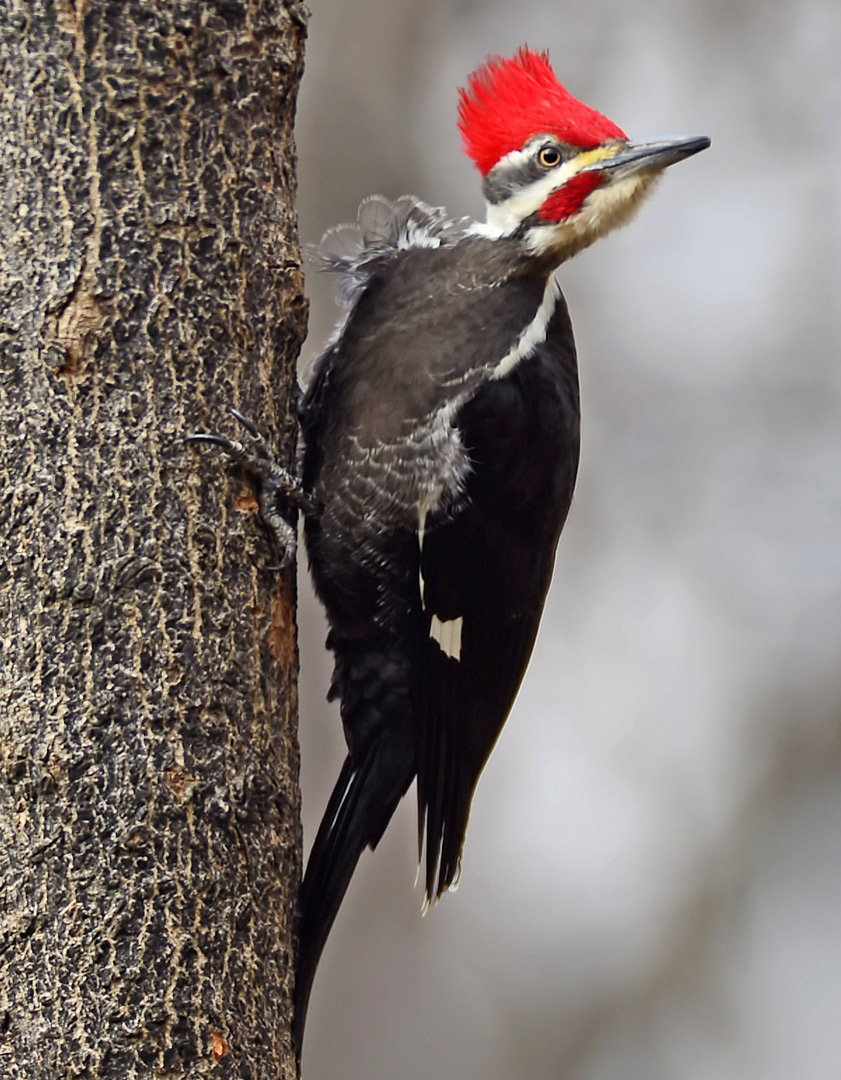
Watch out for—or should that be listen out for—woodpeckers at the parks this winter. Their spectacular coloring delights the eye, while their persistent hammering on trees can be a real assault on the ears, at least until you adjust to it.
When they hammer away at the tree with their hefty bills, they’re either hunting for food, building a nest, or even communicating with other woodpeckers in the area.
There are seven species of woodpecker in Ohio. The largest, and the loudest, of them is the PILEATED WOODPECKER. The famous Woody Woodpecker (cartoon character) was based on a pileated. The cartoon character had something of an insane-sounding laugh, and the real thing is not far different. The sound of a pileated calling carries a long way. They will often hammer away at dead trees and logs to hunt carpenter ants, their most tasty meal, as far as a gourmet pileated is concerned. Pileated woodpeckers are almost as big as a crow. They are black with white stripes on the face and neck and stand out because of their bright-red crest.
The most common species in Ohio is the DOWNY WOODPECKER, which is also the smallest. They are often seen at feeders in the parks, munching away in amongst the chickadees and nuthatches. They are an attractive woodpecker, with black-and-white striped faces, black back with white spots on the wings, and a white breast. Males stand out because of the dramatic red patch on the back of their heads. HAIRY WOODPECKERS, which are less common in Ohio, look almost exactly the same, but they are about three-times heavier and have a longer bill.
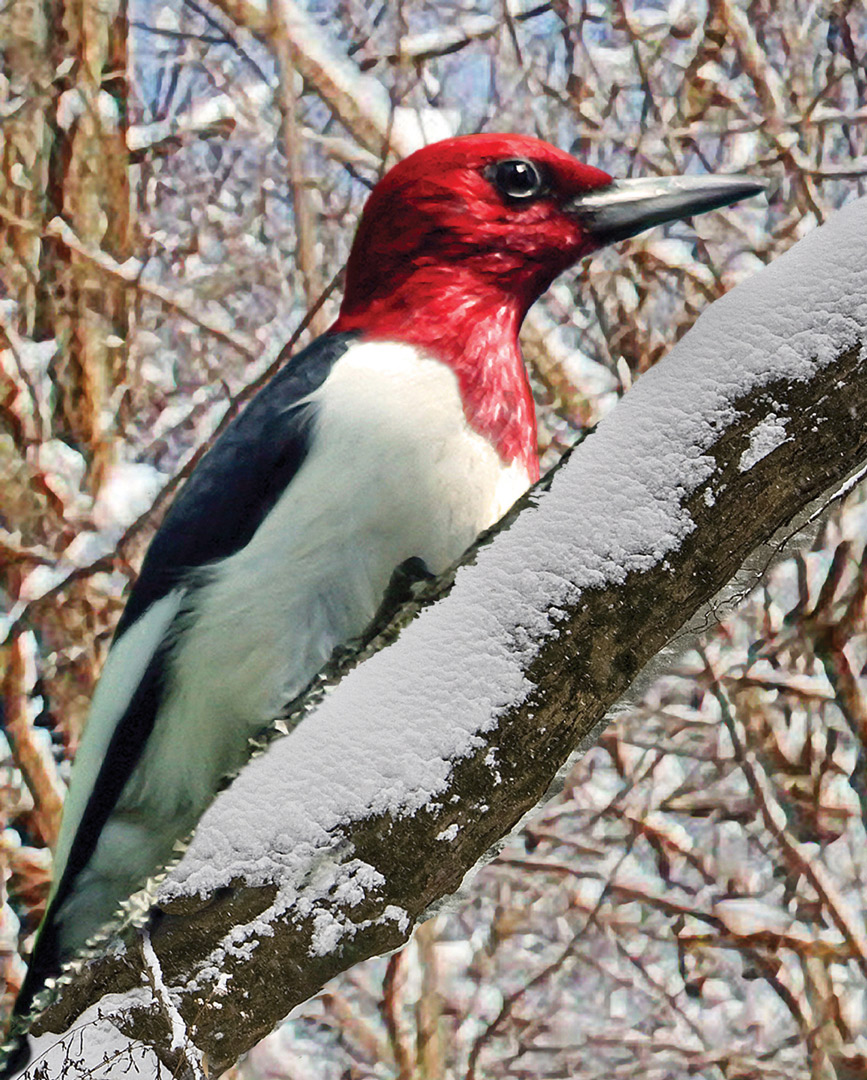
Perhaps the most striking and beautiful of the species are the RED-HEADED WOODPECKERS. As the name indicates, their entire head is red, a bright and beautiful crimson. The rest of the bird is striking too, with black backs and large white patches on the wings. Unlike the other woodpeckers, which haven’t mastered this skill, red-headed woodpeckers can catch insects while in flight.
RED-BELLIED WOODPECKERS are more common than their red-headed cousins. They have bright-red caps, from the nape of the neck all the way to the bill, and striking black and white barred backs. There is more red on their caps than on the belly, which is more a wash of pink across their white breasts.
That’s five of the seven species. The last two aren’t called “woodpecker” in their name, but they are of the woodpecker species nonetheless. The NORTHERN FLICKER is a large woodpecker, with a rounded head and downcurved bill. They are very attractive birds too, but brownish overall, rather than black, with bright yellow tail feathers, and yellow also on the underside of the wings. Their brownish feathers are scalloped with black spots and crescents, and they have a touch of red on the back of their heads. Unlike other woodpeckers, they spend more time on the ground, as their preferred food includes beetles and ants.
The final species of woodpecker for you to look out for is the YELLOW-BELLIED SAPSUCKER. They earned the name because they lap up sap that leaks from the small holes they drill in trees, and feast on any insects trapped in the sap. They have a brush-tipped tongue that helps them get at the insects. They have a red cap, and the males also have a red throat. Black-and-white stripes curve from their faces to a black shield on their chests, with white or yellowish underparts. They make a loud mewing call and sit for a long time on tree trunks while feeding.
Take your binoculars or cameras with you on a trip to a park and take a close-up look or a photo of these spectacular birds. Highly wooded parks such as Highbanks and Blacklick Woods have seen a lot of woodpecker sightings in winter, as has Inniswood, but you can hear their drumming and see their attractive coloring in any of the parks.

